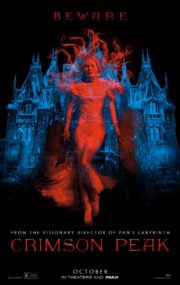A Whisper in the Dark: “Mama”
In the chilling world of horror cinema, “Mama” is a 2013 film that enters the scene with an eerie whisper rather than a scream. Directed by Andy Muschietti and produced by Guillermo del Toro, “Mama” presents the haunting tale of two young girls who, after being abandoned in the woods, are cared for by an enigmatic entity they call ‘Mama’. Years later, when they are found and begin a new life with their uncle and his girlfriend, it becomes clear that Mama is not keen on letting go. This spoiler-free introduction serves only as the prelude to a psychological and supernatural journey—one that delves into the complexities of motherhood and attachment well beyond mere specters and bumps in the night.
The Haunting House of “Mama”
Building Blocks of Fear: Atmosphere and Tone
The atmosphere in “Mama” is crafted through a masterful blend of suspense and a sense of impending doom. The film doesn’t rely on overtly shocking visuals, instead, it kindles fear through its scenes of abandoned buildings and desolate woods that evoke a natural dread. The director’s approach is one that meticulously builds tension, using quiet moments punctuated by sound and visuals to escalate fear in a measured way.
Through the Shadowed Lens: Cinematography and Visuals
The film’s cinematography is finely tuned to complement its horror aesthetic. The use of lighting is especially notable, with shadow play amplifying the uncertainty and terror. The color palette exudes a cold and ghostly impression, backed by camera angles that often suggest the lurking presence of something unseen. The special effects, while occasionally straying into the overt, maintain a level of restrain that serves the movie’s spooky narrative well. Notably, “Mama” does use some unique visual techniques, giving the entity a distinctive, unnerving movement—merging the technical with the terrifying.
The Voice of Fear: Soundtrack and Effects
“Mama” employs its soundtrack and sound effects in a manner that is paramount to the film’s horror elements. The music swells and recedes at all the right moments, creating an invisible tension that is almost palpable. The use of silence, too, is manipulative in the most ingenious of ways, often preceding the chaos of a frightful climax. It is this interplay of sound and silence that marks one of the movie’s most effective tools in conveying horror.
The Frightened and the Fearless
The Cast of Shadows: Character and Performance
The characters in “Mama” are fleshed out enough to evoke empathy, with the young girls’ performances being particularly noteworthy. Their reactions to terror straddle the line of believability, and the adult actors do a commendable job of portraying the complexity of stepping into a parental role under chilling circumstances. The genuine sense of horror is well carried by the cast, who manage to bring warmth to a cold narrative landscape.
Monsters Unseen and Unheard: Types of Horror
The film straddles the domains of psychological and supernatural horror, swinging between mind and myth. It challenges conventions by offering a backstory that invites a sense of understanding or perhaps sympathy for the spectral antagonist, veering away from the typical one-dimensional evil force.
Scares and Stares: Methods of Fear
“Mama” opts for psychological thrills over gore, relying more on anticipation and sudden shocks. This is not a slasher film; it is one that prefers to creep into the audience’s psyche rather than confronting them with constant visceral horror. The film is quite effective in its execution, mostly through the strength of its suspenseful buildups and tense atmosphere.
Mother’s Echo: Themes and Suitability
In Thought and Terror: Underlying Themes
Beyond the screams and scares, “Mama” touches upon the themes of maternal love, loss, and the fear of abandonment. It uses the horror genre as a backdrop to explore these deeper issues, adding a layer of depth to the film’s impact that extends beyond mere frights.
Haunting Impressions: Effectiveness and Audience
As a horror movie, “Mama” holds its own with an emotionally engaging plot and subtle terror. It’s a film that might not cater to the admirer of gore-heavy, action-packed horror but will likely intrigue those who prefer their chills served with a side of psychological and supernatural nuance.
Comparative Chills: A Genre’s Tapestry
When stacked against others in the horror genre, “Mama” is reminiscent of del Toro’s earlier works, with echoes of “The Others” for its atmospheric tension and “The Orphanage” for its emotional depth. It doesn’t surpass these predecessors but stands as a solid addition to the modern canon of ghost stories.
Conclusion: Lament of “Mama”
Overall, “Mama” is a film that weaves terror with tenderness, displaying both strengths and shortcomings. Its atmospheric build, innovative sound manipulation, and compelling performances carry along a story that, while not groundbreaking, is engaging and worth the watch for those with an affinity for nuanced horror. The film will likely resonate more with horror aficionados and those who prefer psychological depth to their dread. While not the scariest entry in the genre, “Mama” does leave a whispering chill—one that reminds us that sometimes the most haunting things are those tied to the heart.
Viewers should be aware of the film’s supernatural elements and mild violence, which may be triggering to some sensitive audiences. “Mama” is a thoughtful, character-driven piece of horror cinema that’s sure to leave an imprint on the dark canvas of the genre, and it is recommended for those in search of a ghostly fable with a touch of heartache.




